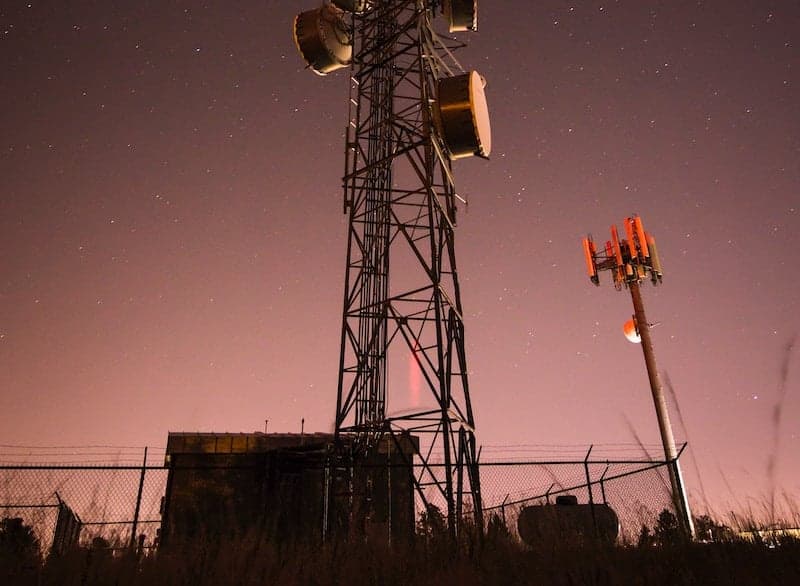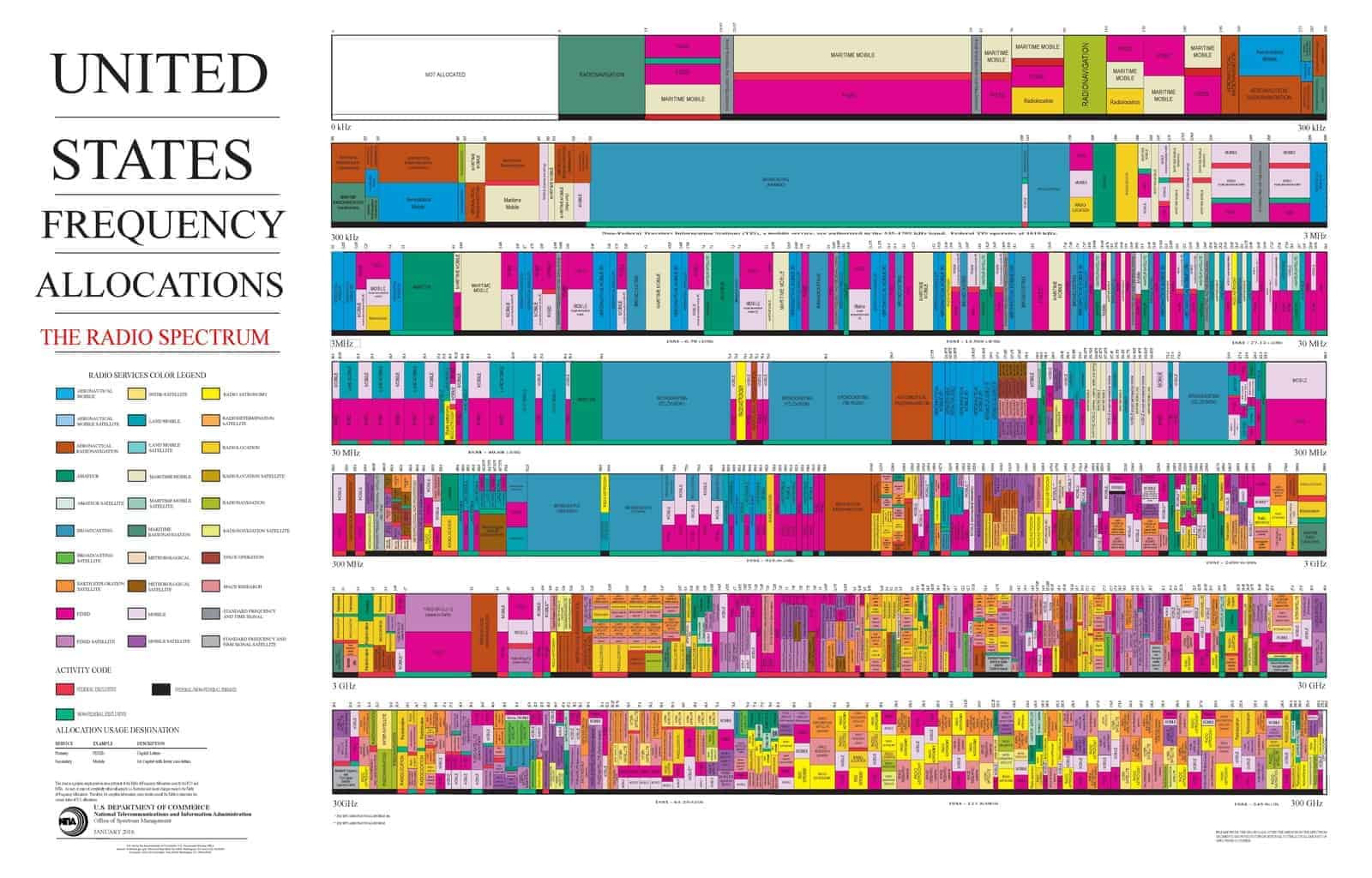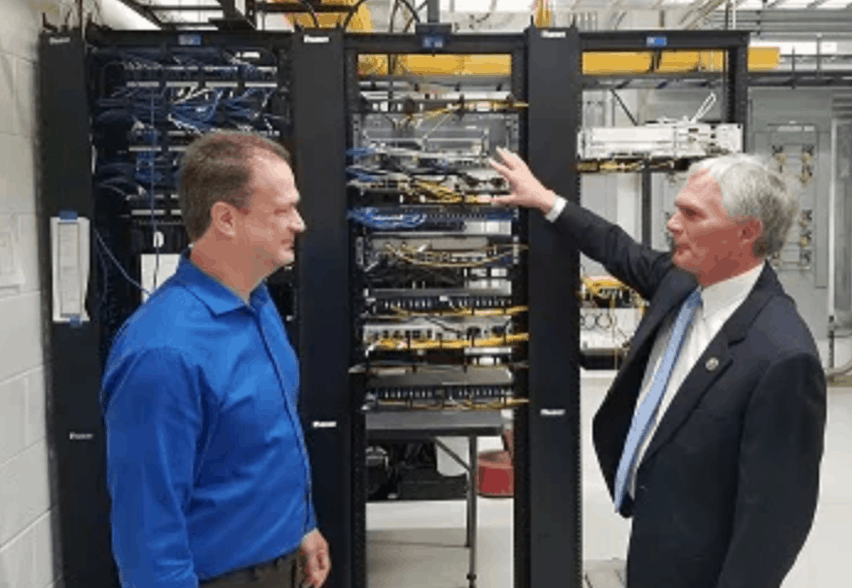Politicians and Big Cable Promise to Bridge the Digital Divide. Small WISPs Actually Build the Bridges.
As of 2018, industry records show that the “digital divide” leaves nearly a quarter of the US without wired broadband access, and 46 million Americans still have only one provider available.
Tech corporations and politicians frequently campaign on the need to build the local networks that will bridge this divide. In spite of all the talk, efforts from tech corporations to bridge the divide have been mostly in the form of isolated experiments like Microsoft’s “white spaces.” On the governmental side, most rural network expansion still comes from begrudging concessions in corporate mergers.
Meanwhile, small Wireless Internet Service Providers, or “WISPs,” are emerging as the real heroes in this story, building out local networks to customers who the major providers can’t (or won’t) serve in rural and low-income areas.
Share with your friends
These small companies are surprisingly well liked. In an industry known for bottom-barrel ratings and high customer churn, WISP customers give consistently positive reviews and remain loyal customers for years. One WISP operator our team spoke to told us that as of 2008, their top source of churn wasn’t from customers switching to other providers or moving — it was that they died.
While morbid, there’s a strong point here; WISPs bring better connectivity, local jobs, and economic growth to underserved parts of the USA. Unsurprisingly, those of us who live in these areas are glad they’re standing up and doing it.
WISPs and the digital divide

In America, the digital divide is a starkly measurable issue and has been a key focus for both Democratic and Republican FCC chairmen over the past two administrations.
The idea of getting fiber run to every home in the US is, for now, little more than a pipe dream.
FCC statistics show that wireless broadband only held a 3% share of the market in 2016, but given the complexity of filing coverage paperwork for small businesses, our analysis suggests that share is probably a point or two higher (especially considering Fixed Wireless’ 51% nationwide coverage).

Advances in 5G technology are pushing up the speeds on these services, and the Net Neutrality debate has stirred local advocacy and spawned hundreds of local network operators. These services provide a fixed wireless alternative to the major broadband players, and whether you’ve heard of them before this point or not, they’re worth looking into.
In short, while these smaller operations don’t get as much attention as the Big Cable cartel, they are the forces actually working to bridge the divide described above, bringing reasonable speeds to areas that have been left behind by technological progress. Unlike fiber which has mostly paused so far as major providers like Verizon and Google go, fixed wireless point-to-point and point to multipoint networks are already being set up all over the country.
This is evidenced in the difference between the costs of deploying a basic WISP and laying additional fiber to get more areas wired up; though specific startup numbers are hard to come by, anecdotal sources seem to show that a company can deploy a WISP in a local area for about $100,000. Compared to average costs of about $3,072 per home for laying fiber, the difference is apparent. At the 500-user mark, that’d mean a total approximate install cost of over $1,500,000. For Google, it cost around $1 Billion dollar per city to connect Fiber to the Home service. Ouch.
WISPs vs. ISPs: What are WISPs?

As briefly touched on above, WISPs provide a fixed wireless Internet service. This means that it relies upon a direct, line-of-sight connection from the access point (normally on top of a tower or tall landmass) to the roof of your home. Don’t get it mixed up, though; this isn’t the “wireless” Internet you’ve come to know with satellite and mobile phones.
Because these access points are usually within 3–5 miles of where you live, you can expect speeds that match what many cable providers offer; and those that dwarf what you’re probably used to in areas with only satellite, DSL, or dial-up. WISPs are also starting to take advantage of technologies such as millimeter Wave (sometimes referred to as mmW) to drive enhancements to their services.

This is a crucial component in the 5G specification, which will supposedly bring Gigabit (1000 Mbps) speeds in the near future. For now, speeds around 500 Mbps are commonly offered for business connections, and the only thing holding them back from residential application is the equipment cost, which descends quickly with any new technology. With millimeter Wave, you’re essentially looking at super high-frequency spectrums, which differ from the lower spectrums used commonly by wireless carriers. Think of it like this:
- High wavelength = high speeds but fragile (such as Wi-Fi)
- Low wavelength = low speeds but durable (such as AM/FM radio)
In addition to their differences from legacy forms of connectivity, WISPs also differ from cable broadband providers in several distinctive ways. With a conventional cable ISP, you’re getting service from a physical cable or fiber connection that runs all the way to your home in some form or another.
Fixed wireless providers don’t have to lay fiber or do anything at all other than set up an antenna on your roof that connects to the access point, making it much easier to get operational quickly and efficiently.
Customers served by WISPS
So, are you trying to decide if a WISP is the best way for you to get online? If so, you may find that it’s the right choice if you:
Have been burned by cable in the past
Let’s face it. Broadband giants like Comcast and AT&T don’t have a perfect reputation amongst many customers. Complaints range the field from a lack of service options and speeds to unreasonable data caps, sudden pricing increases, and contracts. WISPs may represent a more straightforward and fair option for those disenfranchised by their past experiences.
Are looking for Internet-only options
For many users, Internet is king. In the age of providers bundling together TV, phone and web services, this often means that you’re stuck paying for services that you don’t even want because “it was the best deal available.” WISPs provide a comparatively minimal alternative, allowing you to pay a fair rate for a straight-up Internet connection and nothing else.
Live in a rural area
This one is the most obvious on the surface; if you live in a rural area far from a major urban hub, you are highly likely to only have subpar options for getting online. WISPs know this, and in recent years, these companies have made huge strides to get more and more connections set up in these out-of-the-way places.
WISPs vs Big Cable
If there’s one thing that Big Cable has remained consistent on through the years, it would be the tendency for massive corporations like Verizon and Comcast to leverage their political clout to prevent new technologies and service types from posing a tangible threat to the rigged game they’ve so carefully crafted.
This can perhaps most clearly be seen with the recent rescinding of the FCC’s net neutrality regulations, which in theory could represent yet another way for the heavy-hitters to use their vice grip to choke out any potential competition from smaller, bootstrapped players.

This has set off a chain reaction of sorts, rekindling talks by users in online communities about bypassing any potential cable monopolies by literally building their own ISPs. Initiatives such as startyourownisp.com are a direct example of this.
So, it’s clear that consumers and ISPs aren’t exactly known for their long-term love affairs. When it comes to WISPs, however, the story can be different.
Issues facing WISPS:
While WISPs absolutely represent an exciting potential for the future, they do admittedly have their share of roadblocks to push past before they become a serious player on par with the cable giants. Here are a few of the most common problems these operations are grappling with:
Bandwidth Allocation
The FCC is currently debating whether to make portions of specific bandwidths available to be licensed affordability to local operations. If this were to happen, it would be a huge boon for WISPs, as the smaller, shorter-term licenses mean that they would be feasible for a local operation.
Despite this, mobile carriers are (predictably) pushing for larger, longer-term license zones that only they can afford. These decisions will potentially affect the CBRS (3.55–3.65 GHz), 3.7–4.2 GHz, and 2.5 GHz bandwidths, much of which could be used by WISPs to improve signal propagation through difficult elements such as heavy tree cover and other obstructions. How the FCC leans in the end will directly affect these companies and their ability to serve their customers.
Reliability
While fixed wireless as a technology has made strides in recent years, it still has several weak points that can affect performance in certain areas. As touched on above, trees, buildings, and uneven terrain can all be detrimental to a good signal, because again, this tech relies on a line-of-sight from the access point to the roof of your home. Providers we spoke to while researching this story frequently reported difficulty serving wooded areas, where only a physical wire like DSL can provide reliable speeds.
Weather can also present a challenge. “Rain fade” is an issue in climates with frequent precipitation, effectively degrading the wireless signal as it travels through the air. This can be mitigated with proper planning, however, and new technologies aimed at building more robust networks are on the horizon.
Security
Though this issue is arguably more perceptual than actual, some voices in the industry have expressed concerns over encryption and authentication techniques used with wireless networks. That said, though the issues facing wired and wireless networks can vary, both mediums are generally understood to be roughly equal in terms of security.
Share with your friends
What you can do to support WISPs

If you’re feeling inspired and energized by the idea of ditching your cable provider for a WISP, where can you go from here? For starters, you can find out if there are any wireless ISPs operating in your area.
If none are currently available, you can consider contributing to WISP PAC, whose mission it is to bring bipartisan awareness and support for emerging fixed wireless operations to Congress. Co-founder of Rise Broadband and Chairman of the WISP PAC Jeff Kohler had this to say when our team contacted him:
“Politicians must be open to learning about the realities of our industry and support us in areas such as continued access to spectrum, eliminating burdensome regulations that affect small business, and allowing access to government subsidies on a technology neutral basis. Residents can do the same – write to your Senators and Representatives and tell them to listen to the needs of those trying to provide these services.”
Finally, if you’re technically inclined and entrepreneurial, there is a growing movement of local groups building out their own WISPs or mesh networks to create your own cable alternative.
While they may not be the only answer to America’s digital divide (SpaceX’s super-fast satellites come to mind), it’s clear that going forward, WISPs will have an increasingly vital role in getting people in rural areas and beyond connected to the Internet. In what is undoubtedly an added bonus for consumers, they seem to be aiming to do so fairly and securely as well.


